The content of the article
- 1 Possible reasons
- 2 Is it dangerous?
- 3 How to recover and restore an irregular menstrual cycle
- 4 What to do if a problem occurs in a girl in her teens
- 5 What to do to a girl if the problem appeared in childbearing age
- 6 How to treat bleeding with menopause
- 7 Folk remedies
- 8 Surgery
- 9 Preventative measures
- 10 Video: 9 reasons for the failure of the menstrual cycle
With such a problem as menstrual irregularities, a lot of women face. Moreover, this phenomenon does not depend on age; it can be observed both in young girls whose menstruation has just begun, and in mature women due to hormonal failure, trauma, and the onset of the disease.
Usually the first menstruation in a girl’s life comes at about 12-14 years old. During the first year, the menstrual cycle is only being established. On average, a girl undergoes at least eight cycles in 12 months. If a girl older than 14 does not start her period, she should visit a doctor to undergo an examination.
The normal duration of the menstrual cycle is considered to be 21-33 days. It is necessary to start the countdown from the first day of the next menstruation to the beginning of the next. A regular cycle is an indicator of a woman’s health. Bleeding should last no more than a week, and the volume of blood lost should be no more than 100 milliliters. Menstruation that does not meet this norm is a violation.
Regardless of the nature of menstrual irregularities, this can cause problems with the functioning of the reproductive or endocrine system. For this reason, any malfunction in the cycle should be the reason for an early visit to the gynecologist and passing the necessary examinations.
This phenomenon should be taken very seriously, because if you do not receive timely treatment, in the future you may encounter the inability to conceive and give birth to a healthy baby.
Possible reasons
In most cases, menstrual irregularities are explained by a change in the hormonal background. Moreover, it is not a fact that the reason lies precisely in the ovaries: a provoking factor may be a violation of the functioning of the thyroid gland or adrenal glands.
According to WHO statistics, the following are considered the most common causes of menstrual irregularities:
- Inflammation or other lesions of the hypothalamic-pituitary region.
- Ovarian insufficiency.
- Anomalies of the uterus.
- Oncology.
- Elevated levels of prolactin in the blood.
In addition, inflammation that affects the pelvic organs can lead to a malfunction of the menstrual cycle. When the provoking factor is eliminated, the cycle normalizes. The same applies to sexually transmitted diseases.
Today's common diseases like rubella or chickenpox adversely affect the formation of follicles in the ovaries. The result of this can be felt after a few months, and sometimes years after recovery.
Violation of the menstrual cycle sometimes indicates the presence of severe pathologies:
- endometriosis;
- adenomyosis;
- polyps;
- uterine fibroids;
- oncology of the pelvic organs.
In addition, the usual cycle of menstruation can be knocked down due to adverse conditions, which include:
- adherence to strict diets;
- climate change;
- physical stress;
- psycho-emotional stress;
- excessive passion for alcoholic beverages;
- long-term sexual abstinence;
- the use of certain drugs.
It should be remembered that problems with the stability of the menstrual cycle can be caused by a hereditary factor.
Is it dangerous?
Such a problem as a malfunction of the menstrual cycle, in no case can not be left without due attention, since this phenomenon can lead to extremely unfavorable consequences:
- the inability to conceive and bear a child;
- the occurrence of iron deficiency anemia;
- a change in the level of hormones, which in turn can provoke the development of other pathologies;
- formation of benign and malignant tumors in the uterus.
How to recover and restore an irregular menstrual cycle
Treatment should be prescribed by a competent specialist. Therapeutic measures will depend on the identified cause of the failure of the cycle. For an accurate diagnosis, the following activities will be carried out:
- A survey of a woman, during which it turns out what lifestyle she leads, what diseases she suffered, etc.
- Examination by a gynecologist, which also includes an analysis for STDs and a smear on the flora.
- Ultrasound examination of the pelvic organs and thyroid gland.
- GHA (hysterosalpingography) is a method of X-ray diagnosis of diseases of the uterus, as well as fallopian tubes, which is based on the introduction of contrast agents into them.
- Hormonal screening, which determines the level of sex hormones in the patient’s body.
- X-ray of the head (including the Turkish saddle), this procedure will help identify hypothalamic-pituitary disorders.
Based on the results obtained during the examinations, the doctor will prescribe the appropriate treatment, which may be as follows:
- lifestyle correction;
- hormone-based drug therapy;
- physiotherapeutic procedures;
- phytotherapy;
- taking drugs - uterotonics, which reduce blood loss;
- curettage of the uterus;
- operation.
If you seek medical help in time, the chances that the menstrual cycle will fully recover, and, therefore, the disease will recede, will be quite high.
It should be noted that even with an irregular menstrual cycle, a woman can conceive and bear a child. Medication will help to get pregnant using drugs that stimulate ovulation.
What to do if a problem occurs in a girl in her teens
When a teenage girl experiences malfunctions in the cycle, accompanied by juvenile bleeding - dysfunctional discharge from the uterus, treatment is carried out in two stages.
First, hormonal drugs are used, as well as hemostatic drugs - Dicinon, Vikasol.
If the bleeding is quite strong and long, while the girl is concerned about symptoms such as obvious dizziness, passivity and lethargy, a decrease in hemoglobin level, a curettage procedure may be prescribed. Then the histology of scraping is performed.
A doctor can prescribe hormonal drugs (Novinet, Mercilon), but only on condition that the hemoglobin level is not lower than 80 g / l.
If necessary, they will conduct therapy against iron deficiency anemia (blood transfusion, red blood cells, reopoliglyukina). Iron-containing drugs are prescribed.
In adolescence, the duration of hormonal drugs should not exceed three months. Anemia therapy is performed until the hemoglobin values are normalized.
With a mild degree of impairment, vitamin therapy is used along the phases of the cycle. In this case, the funds are taken according to the schedule prescribed by the doctor to stimulate the production of hormones in the ovaries. Such treatment involves taking in the first phase of the menstrual cycle vitamins of group B, in the second - vitamins A, C, E, folic acid.
What to do to a girl if the problem appeared in childbearing age
In this situation, the treatment regimen will be similar to the treatment of menstrual disorders in a teenager. Regardless of age, with severe bleeding, the curettage procedure is performed. This is done both for the purpose of diagnosis and treatment.
Then, hormone therapy is given. A woman will have to take combined oral contraceptives according to the standard schedule. Directly with an inferior second phase of the cycle, the doctor can prescribe funds containing progesterone - Duphaston or Utrozhestan.
Since cycle disorders can cause the impossibility of conception, women of reproductive age are sometimes prescribed Pergonal or Choriogonin, drugs whose action is aimed at stimulating the formation of active follicles. Clomiphene is prescribed to stimulate ovulation.
How to treat bleeding with menopause
If severe bleeding is observed during menopause, a woman uterine cavity is required to be scraped out, as this phenomenon can signal dangerous diseases, including the occurrence of atypical hyperplasia, as well as the development of a cancerous tumor.
In severe cases, the doctor may decide to perform a hysterectomy - a gynecological operation during which the uterus is removed. The procedure is usually carried out with a malignant tumor of the uterus, as well as the cervix or ovary.
Folk remedies
With disorders of the menstrual cycle, treatment with the help of traditional medicine is possible. However, before using them, you must consult a doctor.
The choice of remedy will depend on the type of disorder:
- For rare menstruation (oligomenorrhea), a remedy is used, which is prepared as follows: ½ tsp. grind parsley seeds to a powder state. To use three times a day, washing down with a half mug of clean water, in which a little honey is added.
- In the absence of menstruation for a long time, for example, for several menstrual cycles (amenorrhea), an agent based on wormwood is used, which must be carefully crushed. Pour the resulting raw materials with one cup of boiling water, and then simply put in a water bath. After 20 minutes, remove from heat, cool and strain. Ready broth to drink 100 ml three times a day before meals.
- If the monthly periods are long (more than 7 days) and plentiful (over 100 ml), you can use this recipe: take the following medicinal plants in equal amounts: raspberry leaves, oak bark, goose cinquefoil, strawberry leaves, and yarrow. Next you need a tablespoon of the collection to pour a glass of cooled boiled water. It remains to insist the medicine for four hours. Then put on the stove, bring to a boil, after 5-7 minutes remove from heat, let cool and strain. Drink the prepared product during the day. The duration of the course of therapy is at least five days.
- Also, a remedy prepared on the basis of field horsetail will help normalize a long cycle and reduce blood loss. This plant has long been used for medicinal purposes, due to its hemostatic properties. A spoonful of raw materials should be poured with 500 ml of boiling water, insisted and then drink only a tablespoon with an interval of two hours until the bleeding stops. Then for therapeutic purposes, a spoon three times a day.
- With excessively painful menstruation, a herbal collection consisting of birch leaves, valerian root, mint, buckthorn bark, blackberry leaves, and yarrow helps. So, pour a tablespoon of the composition with 250 ml of boiling water, at least 20-30 minutes. insist, strain well, drink a little throughout the day.
Surgery
Surgery in the treatment of menstrual disorders is extremely rare and only in such cases:
- when severe bleeding is observed, which cannot be stopped in other ways;
- if the patient is over 35 years old.
- In this situation, the curettage of the uterus is performed.
Preventative measures
- Visit a gynecologist for a routine examination at least once every six months.
- Carefully observe the rules of personal hygiene.
- Keep track of the daily routine (rest in a timely manner, avoid increased stress, eat a balanced diet).
- Keep a menstrual calendar - this will allow you to timely detect a failure.
- Lead a mobile lifestyle (exercise, walk more in the fresh air).
- In time to treat the arisen diseases of other systems and internal organs.
Video: 9 reasons for the failure of the menstrual cycle


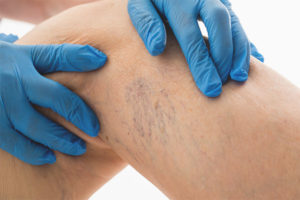
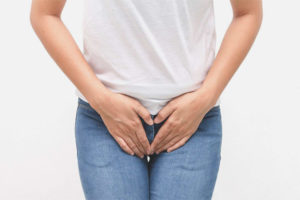
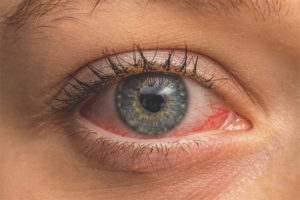


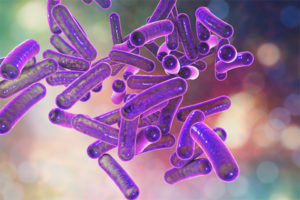
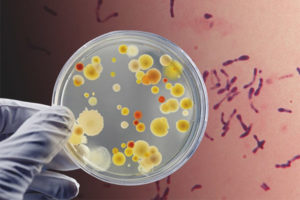

Submit